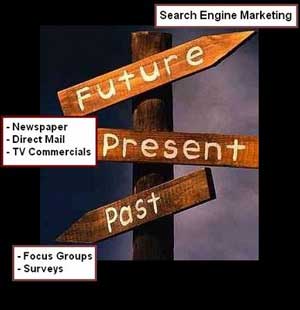 Internet marketing is very different than the kind of marketing my Grandpa and family did when I was growing up.
Internet marketing is very different than the kind of marketing my Grandpa and family did when I was growing up.
I grew up in a family of small business owners. I remember many family gatherings where there was much discussion about marketing and advertising. There was discussion of competition and strategy. As kids, we were told this was “dead man’s talk”, which meant whatever we heard was not meant to be discussed outside of the family. As I write that last sentence, I’m thinking it kind of sounds like mafia, but it wasn’t anything like that- just business talk among family.
Marketing has changed a lot since those days (don’t I sound old?). In those days, marketing was interruption based. Commercials would interrupt your favorite TV shows, commercials would interrupt you while you were listening to your favorite tunes on the radio. Telemarketers would call you while the family was having dinner. You get the idea. Businesses who were advertising had to interrupt you and get your attention to market to you. TV and print ads focus a lot on “getting your attention.” Print advertisers think a lot about colors and fonts and placement. Everything is designed to get your attention away from reading an article and on to their advertisement. Those techniques are still used in those media.
The internet is a different kind of medium. Internet Marketing is permission based. The majority of people now start the purchase process online. When people search for a product or service online they are looking for the site that gives them the best information. Yes, they like sites that are aesthetically pleasing, and an attractive site is important. They want to be able to easily move through your site, so good navigation is important. However, when someone is searching for your product or service and they land on your site, what they are really looking for is information.
Unlike old interruption marketing, once people find you online, you don’t want to interrupt them from finding the information they are looking for by having things that are flashing or jumping up and down or popping up on the screen. You want to give them information that will give them confidence to take the next step in doing business with you. So give them visual cues as to what to do next. The next step depends on your sales cycle. If you have a short sales cycle, the next step may be to click on a “buy now” button or call you and make an appointment. This would be the case for retailers or services like plumbers or electricians. For others, the sales cycle is longer, so you may have to give your visitors a call to action that just gets them in your sales funnel so you can start nurturing them through the sales process. This would be the case for real estate agents or for businesses selling big ticket items.
Marketers of the past would have been astounded at the possibilities offered by today’s internet marketing. Unfortunately, there are still some marketers who want to cling to the past and are still trying to tell us that new marketing is a fad. We have heard it for years, haven’t we? The internet is a fad. Well, they don’t really even try to say that anymore. How about the old style marketers that say Facebook is a fad and that you will never get customers from Facebook? How many of you have gotten customers from Facebook. I know we have.
Don’t get me wrong. I’m not saying that all old marketing is bad. I certainly don’t think that TV, radio and newspaper ads are going to go away any time soon (well maybe newspapers, but we won’t go there). The truth of the matter is that internet marketing is here to stay until something better comes along. I’m sure the newspaper people didn’t like it when radio came along and started taking advertising dollars from them to use on radio ads. In the same vein, I’m sure radio people were not to excited when TV came along and started offering TV advertising. In the same way, today, all of these media are not really excited about internet marketing, but this is the way of the future, whether it is a website, social media or mobile marketing, internet marketing is here to stay.
My Grandpa died at the age of 94 last August. He was a very smart man, and I think he would have loved new marketing!
Key Take Away
- Marketing has changed and continues to change. Smart businesses use effective marketing that will grown their business and get them customers.
 There are still small businesses out there that don’t have a website! They are missing out on one of the most effective and least expensive ways to reach their potential customers. Did you know that if your business does not have a website, you may be invisible to a majority of your target market?
There are still small businesses out there that don’t have a website! They are missing out on one of the most effective and least expensive ways to reach their potential customers. Did you know that if your business does not have a website, you may be invisible to a majority of your target market?
 Are you thinking about SEO strategy in your website design? When most businesses look for a website design, they want an attractive website that is easy to navigate. However, there are several things a savvy web designer can do to help your business website get found online by search engines and your potential customers.
Are you thinking about SEO strategy in your website design? When most businesses look for a website design, they want an attractive website that is easy to navigate. However, there are several things a savvy web designer can do to help your business website get found online by search engines and your potential customers.
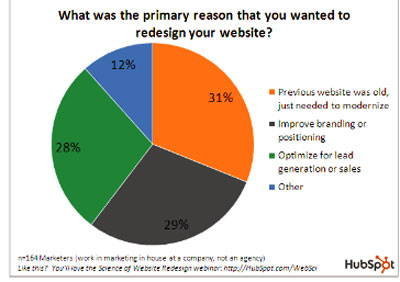

 You’ve decided to take the plunge and set up a website for your small business. The first thing you need to decide is what you are trying to achieve with your website. Will your website simply be an online brochure, or will it be an e-commerce site where people can buy online? Or would you like to make it more of a lead generator where you are more involved with your customers online through a blog or discussion board?
You’ve decided to take the plunge and set up a website for your small business. The first thing you need to decide is what you are trying to achieve with your website. Will your website simply be an online brochure, or will it be an e-commerce site where people can buy online? Or would you like to make it more of a lead generator where you are more involved with your customers online through a blog or discussion board?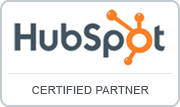 People ask us why Wharton Marketing became a HubSpot Certified Partner. What if there was a methodology for getting your business found on the internet, converting visitors into leads for your business and then a way to measure the results to make sure you are going in the right direction? What if there was a software package that had all the tools you need to do this well with the tools being well integrated? The answer to both of those questions is – “There is! It’s called HubSpot!”
People ask us why Wharton Marketing became a HubSpot Certified Partner. What if there was a methodology for getting your business found on the internet, converting visitors into leads for your business and then a way to measure the results to make sure you are going in the right direction? What if there was a software package that had all the tools you need to do this well with the tools being well integrated? The answer to both of those questions is – “There is! It’s called HubSpot!” At a recent workshop, Joanne Steele from Rural Tourism Marketing recommended that business owners make sure their websites are built using WordPress. We agree! We have been using WordPress for years and have several reasons why we think it is a good choice as a content management system (CMS).
At a recent workshop, Joanne Steele from Rural Tourism Marketing recommended that business owners make sure their websites are built using WordPress. We agree! We have been using WordPress for years and have several reasons why we think it is a good choice as a content management system (CMS).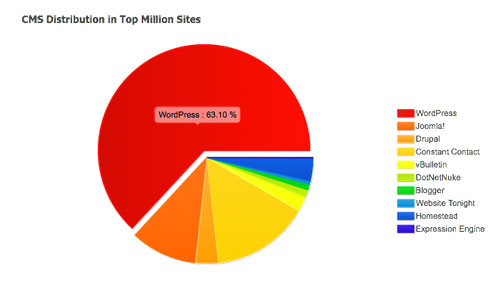
 Internet marketing is very different than the kind of marketing my Grandpa and family did when I was growing up.
Internet marketing is very different than the kind of marketing my Grandpa and family did when I was growing up.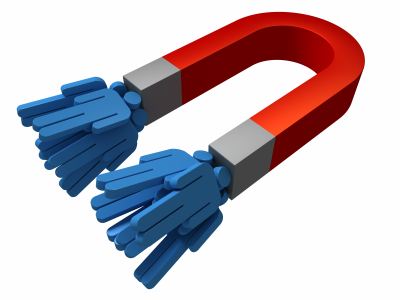 Do you need SEO or lead generation? We often have clients come to us asking for SEO when what they really want is lead generation. Many businesses and website designers get SEO and lead generation confused. Many think they are the same thing. They are not. Clients will often say, “if I can just get more visitors, I will sell more.” While this may be true to some extent, it’s not the most effective way to use a website.
Do you need SEO or lead generation? We often have clients come to us asking for SEO when what they really want is lead generation. Many businesses and website designers get SEO and lead generation confused. Many think they are the same thing. They are not. Clients will often say, “if I can just get more visitors, I will sell more.” While this may be true to some extent, it’s not the most effective way to use a website.